 In Shakespeare’s comedy “The Taming of the Shrew”, fiery Katherina, known for her sharp tongue and independent spirit, meets her match in the audacious suitor Petruchio. As suitors clamor for the hand of Katherina’s demure sister, Bianca, Petruchio embarks on a bold quest to “tame” Katherina into submission. Set against the backdrop of Renaissance Italy, this lively play delves into the tumultuous dance of courtship and the comedic extremes some will endure for love, challenging our perceptions of romance, relationships, and societal expectations.
In Shakespeare’s comedy “The Taming of the Shrew”, fiery Katherina, known for her sharp tongue and independent spirit, meets her match in the audacious suitor Petruchio. As suitors clamor for the hand of Katherina’s demure sister, Bianca, Petruchio embarks on a bold quest to “tame” Katherina into submission. Set against the backdrop of Renaissance Italy, this lively play delves into the tumultuous dance of courtship and the comedic extremes some will endure for love, challenging our perceptions of romance, relationships, and societal expectations.
Basic Info About The Play
- Title of the Play: The Taming of the Shrew
- Author/Playwright: William Shakespeare
- Date of Publication: Believed to have been written between 1590 and 1592. Exact publication date is uncertain, but it was included in the First Folio of 1623.
- Original Language: English
- Genre: Comedy
- Form and Structure: Five-act play
- Setting: The Italian cities of Padua and Verona during the Renaissance.
- Themes: Gender roles, marriage, power dynamics, societal expectations.
- Publication Medium: Originally published as a quarto in the early 17th century and later included in the First Folio of Shakespeare’s works in 1623.
One-sentence Summary
In a whirlwind of wit and wills, Petruchio audaciously seeks to “tame” the fierce Katherina amidst a backdrop of Renaissance romance and rivalry.
Detailed Summary of The Taming of the Shrew, Act-by-Act
Act I: Suitors and Schemes
 In the bustling Italian city of Padua, the wealthy old man Baptista has two daughters: the younger, Bianca, is sweet and sought after by multiple suitors, while the elder, Katherina, is sharp-tongued and rebellious, earning her the reputation of a “shrew.” Baptista declares that no one can court Bianca until Katherina is married, a condition that dismays Bianca’s suitors. Enter Lucentio, a young man from Pisa, who instantly falls in love with Bianca upon seeing her. To get closer to her, he devises a plan: he will disguise himself as a tutor named Cambio to teach her privately, while his servant Tranio assumes Lucentio’s identity to court her openly. Meanwhile, Hortensio, another suitor of Bianca, plans a similar ruse, deciding to disguise himself as a music teacher.
In the bustling Italian city of Padua, the wealthy old man Baptista has two daughters: the younger, Bianca, is sweet and sought after by multiple suitors, while the elder, Katherina, is sharp-tongued and rebellious, earning her the reputation of a “shrew.” Baptista declares that no one can court Bianca until Katherina is married, a condition that dismays Bianca’s suitors. Enter Lucentio, a young man from Pisa, who instantly falls in love with Bianca upon seeing her. To get closer to her, he devises a plan: he will disguise himself as a tutor named Cambio to teach her privately, while his servant Tranio assumes Lucentio’s identity to court her openly. Meanwhile, Hortensio, another suitor of Bianca, plans a similar ruse, deciding to disguise himself as a music teacher.
Act II: Petruchio’s Challenge
 Petruchio, a brash young man from Verona, arrives in Padua seeking a wealthy wife. His friend Hortensio informs him of Katherina, and despite her reputation, Petruchio is undeterred, seeing it as a challenge. He resolves to woo and “tame” her. When Petruchio and Katherina first meet, their exchange is a fiery battle of wits. Despite Katherina’s resistance, Petruchio confidently informs Baptista of his intention to marry her and negotiates a generous dowry. Meanwhile, the disguised Tranio (as Lucentio) and old suitor Gremio bid for Bianca’s hand, with Tranio outbidding Gremio. However, Baptista requires assurance in the form of Lucentio’s father’s consent and presence.
Petruchio, a brash young man from Verona, arrives in Padua seeking a wealthy wife. His friend Hortensio informs him of Katherina, and despite her reputation, Petruchio is undeterred, seeing it as a challenge. He resolves to woo and “tame” her. When Petruchio and Katherina first meet, their exchange is a fiery battle of wits. Despite Katherina’s resistance, Petruchio confidently informs Baptista of his intention to marry her and negotiates a generous dowry. Meanwhile, the disguised Tranio (as Lucentio) and old suitor Gremio bid for Bianca’s hand, with Tranio outbidding Gremio. However, Baptista requires assurance in the form of Lucentio’s father’s consent and presence.
Act III: Lessons and a Chaotic Wedding
 The disguised Lucentio (as Cambio) and Hortensio (as the music teacher) begin their private lessons with Bianca. Both try to woo her during their sessions, but it becomes clear that Bianca favors Lucentio. Elsewhere, Petruchio arrives late to his own wedding, dressed in absurd attire, much to the shock of the attendees. His unconventional behavior continues throughout the ceremony, including hitting the priest. After the wedding, he further asserts his dominance by denying Katherina the traditional wedding feast and taking her immediately to his home in Verona.
The disguised Lucentio (as Cambio) and Hortensio (as the music teacher) begin their private lessons with Bianca. Both try to woo her during their sessions, but it becomes clear that Bianca favors Lucentio. Elsewhere, Petruchio arrives late to his own wedding, dressed in absurd attire, much to the shock of the attendees. His unconventional behavior continues throughout the ceremony, including hitting the priest. After the wedding, he further asserts his dominance by denying Katherina the traditional wedding feast and taking her immediately to his home in Verona.
Act IV: Katherina’s “Taming”
 At Petruchio’s home, Katherina’s “taming” begins in earnest. She is denied food, sleep, and even new clothes, all under the pretense of Petruchio’s care and concern for her. He contradicts and challenges her at every turn, wearing down her resistance. Meanwhile, in Padua, Tranio (still disguised as Lucentio) realizes they need someone to impersonate Lucentio’s father to assure Baptista of Bianca’s dowry. They enlist a passing pedant (or scholar) to play the role. By the end of this act, the real Lucentio and Bianca secretly elope.
At Petruchio’s home, Katherina’s “taming” begins in earnest. She is denied food, sleep, and even new clothes, all under the pretense of Petruchio’s care and concern for her. He contradicts and challenges her at every turn, wearing down her resistance. Meanwhile, in Padua, Tranio (still disguised as Lucentio) realizes they need someone to impersonate Lucentio’s father to assure Baptista of Bianca’s dowry. They enlist a passing pedant (or scholar) to play the role. By the end of this act, the real Lucentio and Bianca secretly elope.
Act V: Revelations and Resolutions
The final act sees multiple revelations and resolutions. The pedant, impersonating Lucentio’s father, meets Baptista and secures the marriage agreement. However, when the real Vincentio, Lucentio’s father, arrives in Padua, confusion ensues. The disguises are eventually unraveled, and the truth of Lucentio and Bianca’s secret marriage comes to light. Vincentio is initially furious but eventually gives his blessing. The play concludes with a banquet where Petruchio, confident in his “taming” of Katherina, wagers with Hortensio and Lucentio about whose wife is the most obedient. To the astonishment of all, Katherina proves to be the most compliant, and she delivers a speech on the duties of a wife, solidifying Petruchio’s triumph in their battle of wits and wills.
Additional Info, Interesting Facts, Breakdowns And More
Main characters breakdown
Katherina (Kate)
The titular “shrew” of the play. She is Baptista’s elder daughter and is known for her sharp wit, fiery temper, and reluctance to marry. Throughout the play, she undergoes a transformation, especially under Petruchio’s influence.
Petruchio
A bold, confident gentleman from Verona who seeks a wealthy wife. He decides to marry Katherina and “tame” her. His methods are unconventional, and he uses psychological tactics to assert dominance over Katherina.
Bianca
Baptista’s younger daughter, she is the opposite of Katherina—gentle, sweet, and highly sought after by several suitors. She is more conventional and compliant compared to her sister.
Lucentio
A young man from Pisa who falls in love with Bianca at first sight. He disguises himself as a tutor named Cambio to get close to her, while his servant Tranio takes on his identity to court her.
Tranio
Lucentio’s clever and loyal servant. He assumes Lucentio’s identity as part of their scheme to win Bianca’s hand. He plays a significant role in the subplot involving Bianca’s suitors.
Baptista Minola
The wealthy father of Katherina and Bianca. He is determined to marry off Katherina before allowing Bianca to wed, setting the main plot in motion.
Hortensio
One of Bianca’s suitors. He disguises himself as a music teacher to get close to her. Later, he marries a widow after realizing he cannot win Bianca.
Gremio
An older suitor vying for Bianca’s affection. He is often at odds with the other suitors and is eventually outbid by Tranio (disguised as Lucentio).
Historical Backdrop
In the heart of Elizabethan England, societal norms and expectations were undergoing subtle shifts. While marriages were still largely transactions aimed at consolidating wealth or status, the Renaissance spirit was ushering in new ideas about individualism and human relationships.
Shakespeare’s “The Taming of the Shrew” is a product of this transformative era. The play, with its intricate dance of power, love, and societal roles, mirrors the evolving perceptions of marriage and gender dynamics of the time, offering both a reflection and a critique of the cultural zeitgeist.
Reception and Evolution
Elizabethan Era
Upon its initial release, “The Taming of the Shrew” was a hit among Elizabethan audiences. They reveled in its comedic elements and the spirited verbal duels between Katherina and Petruchio. The play’s themes, in line with the societal norms of the era, highlighted well-defined roles for women and clear expectations around marriage.
Modern Interpretations
As centuries passed and societal views on gender roles transformed, the play’s reception underwent significant change. By the 20th and 21st centuries, it faced both criticism and reinterpretation.
Contemporary Critiques
Modern audiences often find themselves at odds with the play’s portrayal of gender dynamics. Some view it as a problematic endorsement of male dominance, while others see it as a satirical commentary on societal norms.
Adaptations and Reinterpretations
This evolving perspective has given birth to various adaptations, each reflecting its era’s unique lens. These reinterpretations serve as a testament to the play’s enduring relevance and the ever-changing nature of societal understanding.
Diction and Word Choices
Shakespeare’s “The Taming of the Shrew” is penned in Early Modern English, blending both formal and colloquial diction characteristic of the Elizabethan era. While the language can seem archaic to modern readers, it’s rich in connotations and layered meanings. The term “shrew,” for instance, encapsulates the societal view of a contentious woman, setting the tone for the play’s central theme. Despite its age, Shakespeare’s use of metaphors, puns, and wit provides a deep dive into the societal norms of his time, ensuring the play’s enduring linguistic and historical appeal.
Comparison with Other Works
Shakespeare’s “The Taming of the Shrew” stands alongside his other comedies, like “Much Ado About Nothing” and “Twelfth Night,” in its exploration of love, identity, and societal norms. However, while plays like “Twelfth Night” delve into the fluidity of gender and the complexities of love through disguise and mistaken identities, “The Taming of the Shrew” offers a more direct confrontation of gender roles and marital power dynamics.
Unlike the romantic resolutions found in “A Midsummer Night’s Dream,” where love’s chaotic nature is celebrated, “Shrew” concludes with a more controversial assertion of marital hierarchy. Yet, like all of Shakespeare’s works, it remains a reflection of the societal values and debates of its time, presented with the Bard’s signature wit and linguistic mastery.
Other Interesting Facts
- Performance History: “The Taming of the Shrew” is one of Shakespeare’s most frequently performed plays, maintaining its popularity from the Elizabethan era to the present day.
- Source Material: The play may have been inspired by older tales and plays about unruly wives being “tamed.” There’s also an earlier play titled “The Taming of A Shrew” which has similarities, but the relationship between the two works remains a topic of debate.
- Induction Scene: The play begins with an “induction” or framing device involving a drunken tinker named Christopher Sly. This scene is often omitted in modern performances.
- Adaptations: The play has inspired numerous adaptations across different mediums, including the famous musical “Kiss Me, Kate” and the 1999 film “10 Things I Hate About You.”
- Alternate Interpretations: Some modern productions have chosen to interpret the play as a farce or even a dream, aiming to address the controversial gender dynamics in a more palatable manner for contemporary audiences.
- Elizabethan Views: While the play’s gender dynamics can be jarring to modern audiences, they would have been less controversial in Elizabethan times, where the “taming” would be seen as Petruchio helping Katherina fit into societal norms.
- Female Roles: As with all of Shakespeare’s plays, the female roles, including Katherina and Bianca, would have originally been played by young male actors in Elizabethan times.
My Personal Touch
Shakespeare’s The Taming of the Shrew is a brazen slap in the face of modern sensibilities. A tale of manipulation and outdated gender roles, it’s either a satirical masterpiece or a cringe-worthy relic. Is the Bard poking fun at societal norms, or is he genuinely peddling misogyny?
Was Shakespeare ahead of his time or just a product of it? Dive into the debate below! Is ‘The Taming of the Shrew’ a feminist manifesto in disguise or a chauvinistic nightmare?
Share your fiery takes and let’s get controversial! 🎭🔥👠

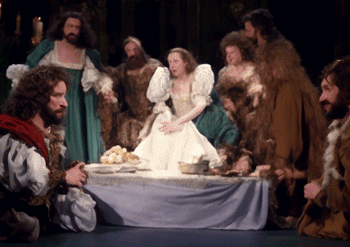
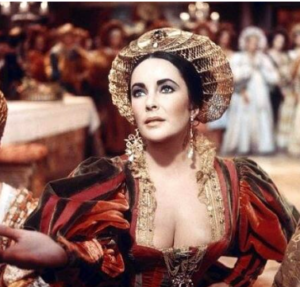

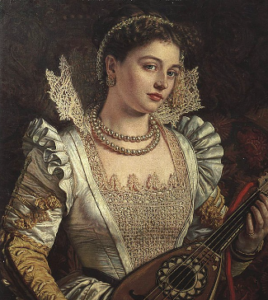
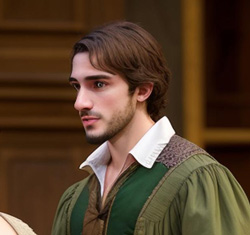
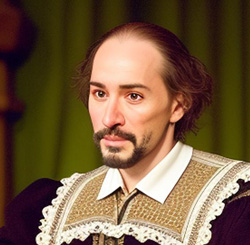

Comments